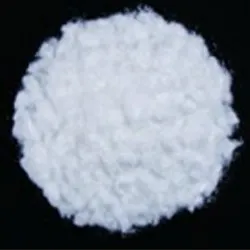
Understanding the Role and Functions of E331 as an Acidity Regulator in Food Products
Understanding E331 The Role of Acidity Regulators in Food
Food additives play a crucial role in the culinary world, enhancing flavors, preserving freshness, and improving the overall quality of food products. Among these additives, acidity regulators stand out, with E331 being one of the most commonly used. E331, also known as sodium citrate, serves several key functions in food preparation and preservation, making it a valuable ingredient in a wide range of products.
What is E331?
E331, or sodium citrate, is a sodium salt of citric acid. It appears as a white, hygroscopic powder and is highly soluble in water. Recognized as safe by food safety authorities, sodium citrate is classified under the European food additives system as an acidity regulator. Its primary function is to control the acidity or alkalinity of various food products, ensuring that they have the optimal pH for flavor and preservation.
Functions of E331
One of the principal roles of E331 in food processing is to act as a buffering agent. By stabilizing the pH level of foods, sodium citrate can help maintain the desired taste profile and texture of products throughout their shelf life. This buffering capacity is especially important in products such as soft drinks, sauces, and dairy products, where acidity can significantly affect taste and quality.
Additionally, E331 is often used in cheese manufacturing. It helps in emulsifying cheese, allowing for a smoother texture when melted. This function is essential in processed cheese products, where a creamy, homogenous consistency is desired. Moreover, sodium citrate can improve the melting properties of cheese, making it a popular choice in the production of cheese sauces and dips.
Another significant function of E331 is its role as a preservative. By maintaining an optimal pH level, sodium citrate can inhibit the growth of harmful bacteria and pathogens in food, extending the shelf life of many products. This is particularly beneficial in products such as canned goods and ready-to-eat meals, where food safety is paramount.
acidity regulator e331

Uses in Various Food Products
E331 is commonly found in a variety of food items, including beverages, dairy products, confectioneries, and processed foods. In soft drinks, sodium citrate is often used to enhance the flavor by providing a slight acidity, balancing the sweetness and contributing to the overall flavor profile. In dairy products like yogurt and cheese, it ensures the right consistency and prolongs shelf life.
Furthermore, E331 is utilized in sports drinks and energy beverages. It not only helps in regulating acidity but also aids in the formulation of electrolyte solutions, promoting hydration and energy replenishment for athletes and active individuals.
Safety and Regulation
The safety of E331 has been extensively evaluated by food safety authorities around the world. It is considered safe when consumed within established limits, making it a popular choice among food manufacturers. However, like all food additives, it is essential for consumers to read food labels, especially for those with specific dietary restrictions or sensitivities.
Conclusion
In summary, E331, or sodium citrate, is a versatile acidity regulator that serves multiple roles in the food industry. From enhancing flavor and texture to preserving food and ensuring safety, its benefits are significant. As consumer awareness of food ingredients continues to grow, understanding the role of additives like E331 is increasingly important. This knowledge empowers consumers to make informed decisions about their food choices, ensuring they enjoy safe and high-quality products. Whether enjoyed in a refreshing drink, a creamy cheese sauce, or a savory snack, E331 quietly enhances our culinary experiences, proving that the right ingredients can make all the difference in our food.
-
Understanding Synthetic Rubber OptionsNewsApr.27,2025
-
Trichloroisocyanuric Acid: Essential for Clean and Safe WaterNewsApr.27,2025
-
Sodium Dichloroisocyanurate: Key to Safe Water TreatmentNewsApr.27,2025
-
Sodium Acid Pyrophosphate: Essential in Modern Food ProcessingNewsApr.27,2025
-
Essential Water Treatment ChemicalsNewsApr.27,2025
-
Denatured Alcohol and Its Industrial UsesNewsApr.27,2025
-
The Versatile Uses of Sodium BicarbonateNewsApr.24,2025
Hebei Tenger Chemical Technology Co., Ltd. focuses on the chemical industry and is committed to the export service of chemical raw materials.
-

view more DiethanolisopropanolamineIn the ever-growing field of chemical solutions, diethanolisopropanolamine (DEIPA) stands out as a versatile and important compound. Due to its unique chemical structure and properties, DEIPA is of interest to various industries including construction, personal care, and agriculture. -

view more TriisopropanolamineTriisopropanolamine (TIPA) alkanol amine substance, is a kind of alcohol amine compound with amino and alcohol hydroxyl, and because of its molecules contains both amino and hydroxyl. -

view more Tetramethyl Thiuram DisulfideTetramethyl thiuram disulfide, also known as TMTD, is a white to light-yellow powder with a distinct sulfur-like odor. It is soluble in organic solvents such as benzene, acetone, and ethyl acetate, making it highly versatile for use in different formulations. TMTD is known for its excellent vulcanization acceleration properties, which makes it a key ingredient in the production of rubber products. Additionally, it acts as an effective fungicide and bactericide, making it valuable in agricultural applications. Its high purity and stability ensure consistent performance, making it a preferred choice for manufacturers across various industries.











